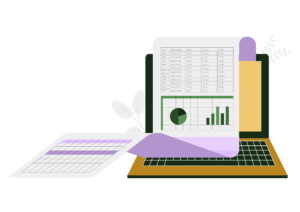
Adapting to sustainability consumer trends
Understanding consumer trends has always been a vital part of a successful business. Now more than ever, one of the biggest trends being seen is the focus of consumers on the sustainability and environmental impact of the brands they invest in.
In 2020, ‘ThinkwithGoogle’, reported a marked increase in sustainability-related searches in the last 12 months alone. It suggests that as consumers have become more educated on the issue of sustainability, the expectation of brands to share their concerns has soared. For your business, this means meeting the needs of your consumer is not just about having the right product or service, at the right price, but delivering that service in a way that promises to be sustainable and shows a concern for the environment. By sharing this passion with your consumers, not only do you boost your brand’s reputation, but you become a part of protecting our planet in the process – and who wouldn’t want to be a part of that?! So, what options do you have to help your business run in a more sustainable and eco-friendly way? How can you ensure you adapt the way your business is run to meet sustainability consumer trends? In this article, we delve into some tips for getting started.
Ways to improve sustainability
Each organisation is different and faces unique challenges when it comes to their impact on the environment. Whilst we recognise there is no blanket rule for all, we’ve put together a list of our top recommendations for areas worth reviewing in order to adapt to sustainability consumer trends. Hopefully whatever your business, however big or small, you feel inspired with an idea or two that could work for you.
Supply chain
The focus on the sustainability of each and every aspect of the supply chain is becoming more and more important for the consumer when it comes to making a decision on where to buy their products from. Whether or not the raw materials at the start of the supply chain are renewable, such as wood or essential oils, and how that material is then transported nationally or globally for manufacturing and the physical delivery of the item to the consumers door are all aspects that they want information on. To meet the consumer’s desire for this type of information, a business needs to not only understand how to maximise sustainability at each and every stage of the supply chain, but also be transparent with its consumers on what it is doing.
Products
Investing in parts and packaging that either have been recycled or can be recycled has a huge role to play in sustainability. Many big brand names have shown concern for this area of sustainability, with Google pledging to include recycled material in all of its products by 2030, such as recycled plastic and metal for its phones and speakers. Amazon already uses recycled parts for its echo speaker, whilst Samsung’s earbuds contain recycled plastic. If there is any element of your product that can be made from recyclable materials, now is the time to start.
Waste
For a product, reducing waste material at the end of its lifecycle is as important in sustainability as the type of material it is made from in the first place. Have you developed a product that can be relatively easily repaired rather than replaced? Is the lifespan of the product as long as it should be? Consumers are increasingly worried about waste, so making sure you think about the end of the lifecycle is vital. A great way to reassure them of your concern for the environment even after their purchase, could be to set up trade-in or a recycling scheme.
Energy consumption
If you have a business property; a warehouse, office, garage, shop or something else; checking energy usage is efficient could see you make huge savings, whilst improving the sustainability of your business. Examples include checking how the property is heated, improving insulation so less heating is needed, utilising solar power, or a simpler idea such as not using unnecessary lighting. You could dedicate a member of staff as an ‘eco-warrior’ who runs the checks when a building is left unattended to ensure no energy is wasted. Despite this aspect of the business not necessarily having a direct impact on the consumer at the end of a transaction, showing concern showcases your passion for sustainability is at the heart of everything you do.
Daily operations
For many businesses, you may find you are able to lower your carbon footprint by re-jigging the daily operations. If it is essential for staff to travel for meetings, are they using public transport, could you organise incentives for car share or walk/bike to work schemes for the commute to work, is the travel even necessary at-all when more and more businesses are finding ways to conduct meetings online and work from home?
Software and sustainability

Environmental health and safety (EHS) and sustainability software can be hugely advantageous when it comes to optimising the sustainability of your business and adapting to the consumer trend that’s here to stay. Modern software allows you to monitor every aspect of data within your business, from the supply chain, to energy usage, to raw material reduction, even the risk on non-compliance with environmental legislation, and so much more. It gives you the opportunity to share accurate, real-time sustainability data in marketing campaigns, and transparency to the consumer who wants to know more. It also gives you the best insights into every aspect of your business performance to inform decisions on areas that can be addressed to improve sustainability.
Our wrap around sustainability consultancy services can help you stay on top of the trends – whether you need help with your initial strategy or optimising your sustainability software.

